Why now is the time to explore outer East London
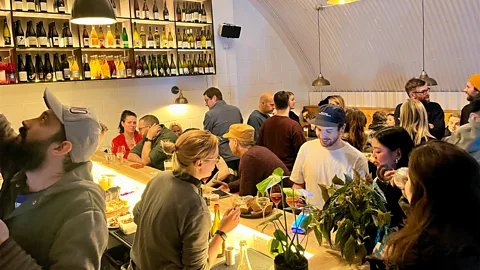 Stephen Emms
Stephen EmmsA few miles from East London's perennially hip neighbourhoods, an explosion of art and culture is transforming a once-neglected stretch into one of the city's hottest destinations.
East London. Two words that, if you know anything about the UK's capital, often conjure up opposing opinions.
There are those who mourn its supposedly waning hip factor – regaling stories of 1980s warehouse art shows or squat parties – while deploring the rampant commercialism of its supercharged epicentre, Shoreditch. Others, meanwhile, will rave about new independent galleries or small-plate restaurants in nearby Dalston, Bethnal Green or Hackney. Yet, the general consensus is that East London's long-buzzing arts and food scenes are continuing to move ever further out, driven – as in other world cities – by the relentless search for affordability.
But a few miles east of these oversubscribed neighbourhoods are two boroughs that are lesser known to visitors and have been quietly emerging as London's next artsy enclave: Waltham Forest and Newham. Stretching north from Stratford up to Leyton and Walthamstow, this once-unfashionable outer area hasn't always matched East London's brand of cool. And yet in spring 2025, it's witnessing a cultural explosion, with new museums, theatres and bars and some of the city's biggest arts openings that are putting this under-the-radar corner of London on the map.
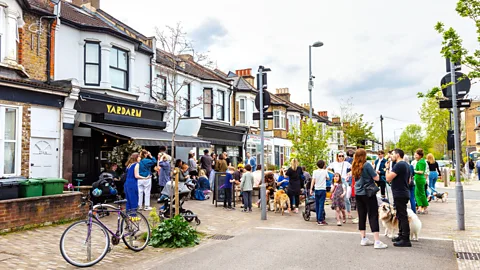 Alamy
AlamyThe catalyst for these boroughs' rise was the 2012 London Olympics, which transformed the area's scrapyards and brownfield land into Queen Elizabeth Olympic Park – an oasis of rivers, canals and water meadows bordered by Stratford, Leyton and Hackney.
"The Olympics brought a huge amount of investment in infrastructure, transport links and housing," said Britannia Morton, co-chief executive of Sadler's Wells, the world-famous Islington-based dance theatre founded in the 18th Century. "The Olympic Park, where our new Sadler's Wells East is based, was created converting marshland into this beautiful environment."
Sadler's Wells East, which opened in February 2025, is located in East Bank, a £1.1bn new waterside cultural quarter in the Olympic Park. "[It was] formerly known as Fridge Mountain – a dumping ground for old electronic appliances," said Morton. The first landmark to open here was the University of the Arts' London College of Fashion in October 2023, which has galleries and a cafe open to the public. Sadler's Wells East was built in Italian red brick and houses a 550-seat state-of-the-art auditorium and six dance studios.
"Whether you're interested in ballet, hip-hop, kathak or contemporary, our eclectic programme brings the most innovative work created locally, nationally and internationally to Stratford," said Morton. Visitors can enjoy free events in its public spaces, including lunchtime dance classes on the community dance floor, as well as a bar and restaurant. There are panoramic views from its rooftop over the London Aquatics Centre, Sir Anish Kapoor's 114.5m ArcelorMittal Orbit (the UK's largest sculpture) and the London Stadium.
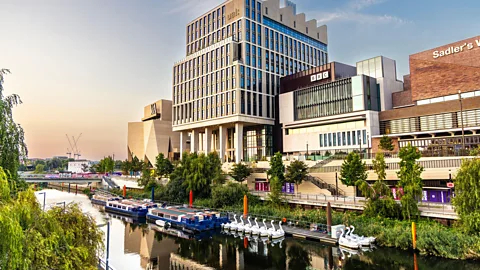 Alamy
AlamyAcross the park at the Here East innovation and tech campus (formerly the London Olympics Media Centre) is the glass-fronted V&A East Storehouse, opening 31 May 2025. It's the first half of the new V&A East, whose South Kensington-based original is the world's largest museum of applied arts, decorative arts and design, with more than 2.8 million objects in its permanent collection.
This first instalment is essentially a new home for the V&A East's reserve collection (hence the name "Storehouse"), and "a magical new behind-the-scenes museum experience", according to its deputy director and COO Tim Reeve. With 100 curated mini displays, its half a million works range from the Glastonbury Festival Archive to Dior haute couture and mid-century furniture. Its world-first Order an Object experience allows anyone to book an appointment to view anything from Roman frescoes to Elton John's costumes. It will also be home to the new David Bowie Centre, opening 13 September 2025, displaying the singer's outfits, lyrics and archive.
"It's a new standard for access to national collections," said Reeve. "We're encouraging visitors to feel empowered to make their own journeys through the V&A's global collections."
The second half, the five-storey V&A East Museum, is opening in East Bank in spring 2026. Its main exhibition hall will celebrate leading artists, designers and performers in major shows, and its galleries will narrate stories of East London's creative and manufacturing heritage.
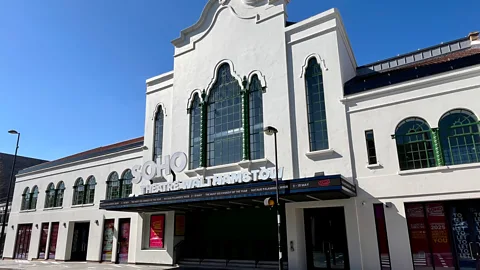 Stephen Emms
Stephen EmmsElsewhere in East Bank, BBC Music Studios, which will house the BBC Symphony Orchestra and host recording sessions and live performances, is slated to open in late 2026 or early 2027.
And that's not all. A couple of miles north in Walthamstow, another major cultural opening is happening. While this diverse north-east London suburb has long been thriving – its pretty village centre, some of which dates to the 15th Century, is indeed a gentrification hotspot – the imposing new Soho Theatre Walthamstow will further raise the neighbourhood's profile when it opens on 2 May 2025. A former cinema designed in 1930 by architect Cecil Masey, the distinctive building was inspired by the Moorish architecture of the 13th-Century Alhambra palace in Granada, Spain. In its mid-20th-Century heyday, it also hosted gigs by The Beatles, Buddy Holly, Roy Orbison, Dusty Springfield, Chuck Berry and the Rolling Stones – before closing in 2003.
When it finally reopens, with its original Art Deco stylings revived, the Soho Theatre Walthamstow will have a 960-seat Grade II-listed auditorium, studio spaces, four bars and a restaurant. (In comparison, its current West End location has a capacity of just 240.)
"This is the first time we've had a professional theatre in the area," said executive assistant Annie Jones, who worked on the restoration project for more than five years. "The programme will list up to nine shows a night – a mix of comedy, cabaret and theatre all rooted in its community. Waltham Forest has always been welcoming, with its vibrancy, multiculturalism and openness, and its spirit has only grown."
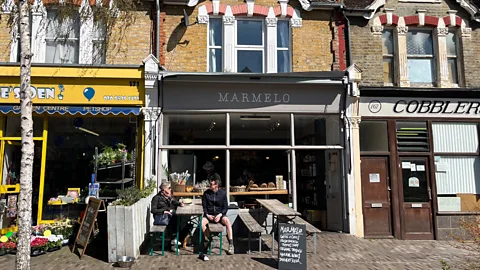 Stephen Emms
Stephen EmmsConnecting Stratford, the Olympic Park and Walthamstow is Leyton. This once-maligned area is now home to one of the most up-and-coming strips in East London. Previously more synonymous with fly-tipping, Tilbury Road railway arches (a narrow alleyway opposite Leyton Midland Road station) has been transformed by new arrivals in the last year alone, including three bars, a bakery, a Caribbean restaurant and two soon-to-open artisan cafes. The opening of two popular microbreweries in the last few years on the same stretch sparked this sudden transformation: Gravity Well, nestled in the station arch itself, and the edgier Libertalia taproom, named after a mythical anarchist colony in the 17th Century.
For Leyton-raised Danny Saunders, owner of tropical cocktail bar Leyton Calling (which opened in summer 2024) and cosy candlelit pub Chop Shop Tavern (which opened in February 2025), it's a personal coup, having known the area since the 1980s. "I've come full circle," he said, with a smile. "My latest bar is in the actual arch where I set up my first car repair business back in the day."
Leyton's rise as a whole has, however, been something of a slow-burn. Back in the mid-2010s, nearby Francis Road began to be taken over by independent creative businesses. "I opened here in 2017," said Aimée Madill, who owns Phlox, a bookstore, cafe and wine bar. "It was risky as it was still a 'less-developed' part of London, but local indie bookshops are more than a business, they're a sign of confidence in a community."
Pedestrianised in 2017, the tree-lined street has since blossomed with chic cafes and bars: two of the latest openings are vinyl store-cum-craft beer bar Dreamhouse Records and Loop Dining, a pop-up space launched in summer 2024 to host weekly residencies from buzzy up-and-coming chefs.
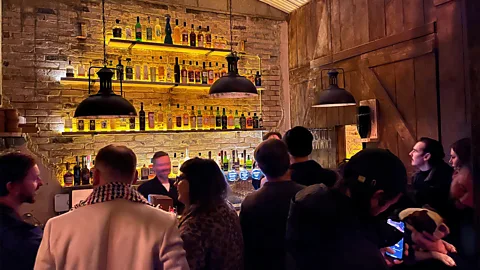 Stephen Emms
Stephen Emms"Unlike Stratford," Madill said, "Leyton is characterised by small makers and creatives existing side by side with businesses who've been here decades. Most of us live here, so we've been able to revitalise, rather than reinvent, parts of the area – which adds to the sense of community."
So what's next for outer East London? "Young people and families are now priced out of Hackney," said Michaela Zelenanska, who runs natural wine bar Swirl, which opened in December 2024 on Tilbury Road. "Leyton and neighbouring Leytonstone seem a logical next big thing. It's small businesses that make the place what it is."
Will London continue to move ever further east? "We're already engaging with artists, audiences and community groups in Barking and Dagenham," said Morton, referencing two outer London suburbs several miles from Leyton and Stratford. "East London has always been a creative crucible."
Stephen Emms is an East London resident who writes a weekly newsletter called Leytonstoner about the arts, food and drink scenes primarily in Leyton, Leytonstone, Stratford and Walthamstow.
--
If you liked this story, sign up for The Essential List newsletter – a handpicked selection of features, videos and can't-miss news, delivered to your inbox twice a week.
